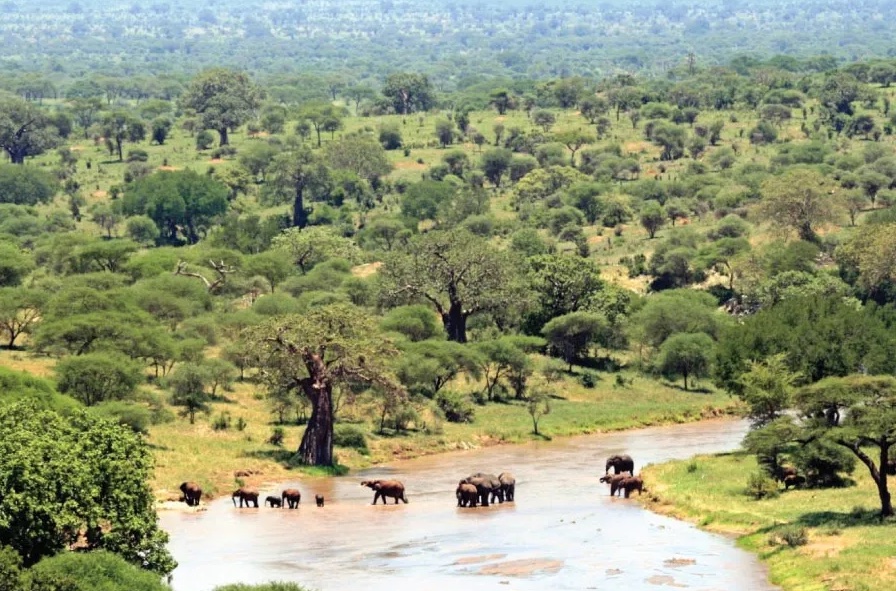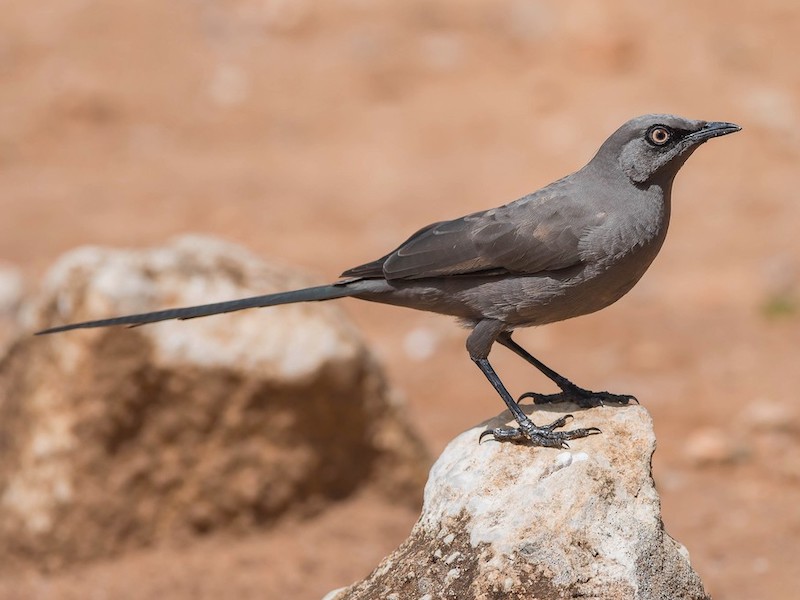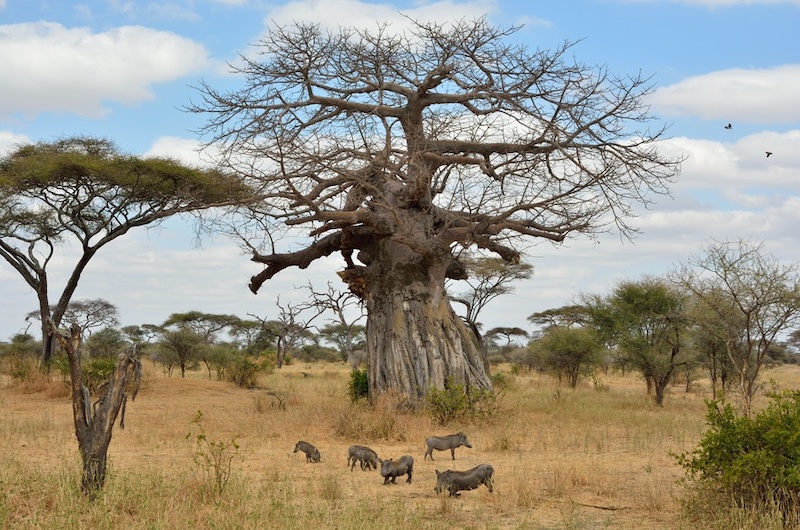Located within the Manyara region, south of Arusha, Tarangire is one of the most outstanding natural habitats in northern Tanzania. The park is named after River Tarangire which flows across it. The river acts as the major lifeline for most living organisms in the national reserves, particularly in the dry period.
Tarangire is the sixth largest game park in Tanzania with a total surface area of 2,850 square kilometres. Ridges, river valleys, and swamps fleeced by baobab trees, acacia woodland, and combretum and sporadically flooded grassland are the dominant landscapes in the park. The aforementioned landscapes imposingly contribute to the huge number of wildlife species in the area. The mounds of termites are also part of the topography of the park. These holes were deserted by termites and are now shelters for dwarf mongooses.

The biome of Tarangire is dominated by the great migration of wildebeests, gazelles, and zebras, specifically in the dry spell. These hoofed mammals migrate from the Serengeti plains to find life on the shores of Tarangire since it is one of the few sources of water in the area in the dry season.
Tarangire is also home to a staggering number of elephants and a high concentration of baobab trees. In 2005, It become a lion conservation area, and research is being made on the Maasai giraffes and African bush Elephants. The oldest elephant to have produced twins lives in the area. In 2015, A white giraffe was seen which suffered from leucism, a unique disease. This incredible natural habitat harbors other interesting exotic mammals such as cheetahs, lions, leopards, elands, impalas, waterbucks, giraffes, and dik-dik among others.
Birds are present in the environs of Tarangire national park with 550 species recorded to its name. Birders love it here because they are exposed to a variety of birds and many regard the park as the best birding area in the country.
Accessibility | How to reach Tarangire National Park, Tanzania
To visit Tarangire national park, tourists are advised to book with a local tour company to arrange a convenient means of transport to access it. Whether a tourist wishes to use a 4×4 safari vehicle or fly to the park, the tour operator can make arrangements.
Tarangire national park is strategically located, only 150 kilometers away from Arusha, the main gateway for international travelers. It takes about 3 hours by road between the two points. For those using air means, there are light planes that commute from Kilimanjaro international park to Manyara airstrip every day.
For tourists coming from Lake Manyara National Park, the road distance to Tarangire is only 70 kilometres, about one and a half hours.
Popular activities to do in Tarangire National Park
Wildlife Viewing | Safari game drives in Tarangire
Viewing wildlife is the most popular tourist activity in Tarangire national park. During this outdoor and adventurous activity, tourists are driven by a 4×4 pop roof safari vehicle under the leadership of either a park guide or tour company guide to search and watch the various exotic animals in the park. This pursuit grants the possibility of seeing Africa’s deadliest animals in their default form as they go about their business in the jungle. The safari game drives in Tarangire national park are organized both during the day and at night.
Kitibong, Lamarku, Lemiyon, Gursi, and Western Lake Barungi are the popular trails to take on a game drive to stand a chance of encountering the most talked about animals in the park for example lions, leopards, elands, wild dogs, buffaloes, impalas etcetera.
The great migration of wildebeest, gazelles, and zebras also takes place in Tarangire. These ungulates move from the Serengeti plains to River Tarangire for water and pasture in the dry season. Therefore, those interested in this amazing spectacle, book your trip to Tarangire and consider traveling in the period of June through October.
Tarangire National Park is in a good location geographically and we can easily combine the park with others in one safari. Including the Lake Manyara, Ngorongoro Crater and the famous Serengeti National Park.
Bird watching in Tarangire

With a whopping 550 bird species, Tarangire national park is the place to be for birders. The species vary from water birds, savannahs, and migratory to endemic ones. Spending two or more days allows birders to comprehensively find their favorite species. Hiring an experienced bird guide in the park or request one from the tour company is advised for an informative birding experience. A good camera and pair of binoculars must come in handy to maximize the moment. The interesting birds to seek out in the Tarangire include helmeted guinea fowl, giant lappet-faced vultures, ashy starlings, and yellow-collared lovebirds to mention but a few.
Tarangire Walking Safaris
Do you wish to get intimate with nature, smell, feel and touch it, a walk in the southern part of Tarangire makes it possible. The attractions to enjoy on foot expeditions are water streams, birds, reptiles, tree species, herbs, amphibians, elephants, elands, and impalas. The nature walks are popularly arranged by lodges within the southern part. The south of the part is less explored and with few carnivores thus being conducive for the expedition. Nevertheless, an Armed park ranger escorts the visitors for protection in case danger erupts. Wild animals are unpredictable and dangerous whether carnivorous or not.
Cultural tours around Tarangire
The Maasai formidably occupied the northern part of Tanzania, especially the wilderness. Like in any other northern Tanzanian park, Maasai is the culture to mix and mingle while touring Tarangire national park. The Maasai are traditional people and much is enjoyed by tourists, for instance, their social life, history, Art, and craft. The highlights of the Maasai village tour are visiting the craft shops, having a chat with the elders, and watching their dance and music.
A visit to a Masai Village is also possible in other areas and you may also visit one in the Ngorongoro Conservation Area if you missed the chance to visit one within the Tarangire area.
Best time to visit Tarangire National Park

Unprecedented, Tarangire National Park is mostly visited in the period of June to October and December, January to March. The aforementioned periods represent the dry season of the year hence automatically becoming the most preferred or even the best time to visit the park. The reasons for massively visiting the area in the dry spell are that it offers a conducive environment to engage in various outdoor activities like game drives, walking safaris, and birding which are highly desired. The skies are bright and the savanna grasslands are short and open to clearly watch the wildlife and also capture sublime pictures and videos. The terrain and roads are also dry and passable at this time of the year. Noteworthy, the great migration of wildebeests, zebras, and migration can be witnessed in the park in the dry period.
It is said the wet period, the months of April, May, and November have disadvantages like heavy rains that make the roads unfathomable and the difficulty of seeing animals due to the tall bushes. But not all is bad in this period, for example, the landscapes during this time are incredibly beautiful because of the greenery. The park is less crowded with tourists and the travel services rates are lower. Lastly, this time is the highest time for birding, the migratory birds come into the area and also other kinds are in plenty because of the availability of trees and water.
Where to stay in Tarangire National Park
The availability of lodges in Tarangire national park is undoubted. These are widespread within and outside the park. Any sort of tourist can find a place to stay because of the different classes of lodges found in the area, that is to say, luxury, standard, and economy. All the tourist does is disclose their budget and is advised the lodge to stay. Some of the accommodation establishments to choose from include Baobab Tented Camp, Tarangire Simba Lodge, Lemala Mpingo Ridge Lodge, and many more.
